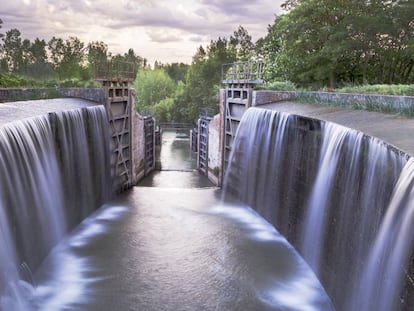Five gems for travelers in undiscovered Spain
The regions of Aragón, Castilla y León, and Extremadura are home to sparsely populated areas filled with natural wonders and cultural sites that are well worth a visit
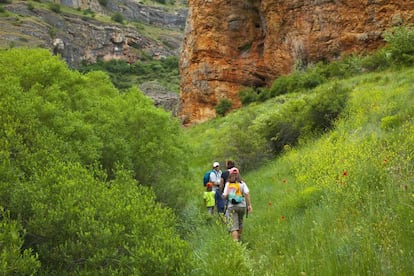
1. Caracena (Soria)
Soria province, in the region of Castilla y León, contains numerous hamlets that have fallen into oblivion but were once important administrative centers in medieval times. These include places such as Caracena, a small village located 26.7 kilometers from El Burgo de Osma, which was the administrative seat for more than 30 hamlets back in the 12th century. It is possible to get there by car along the road from San Esteban de Gormaz, but walking there makes for a nice two-hour trek: the trail follows the gorge of the River Adante from Tarancueña, and affords views of vultures and other birds of prey as they glide over the ravine. Just a 15-minute drive from Caracena, along the SO-135 road, visitors will find the ruins of Tiermes, a Celtiberian settlement that was conquered by the Romans in the year 98 BC, and was turned into a vibrant town with a theater, baths and large mansions. Another landmark in the area is the pre-Romanesque shrine of Our Lady of Val, within the municipal limits of Montejo de Tiermes.
2. Valderrobres (Teruel)
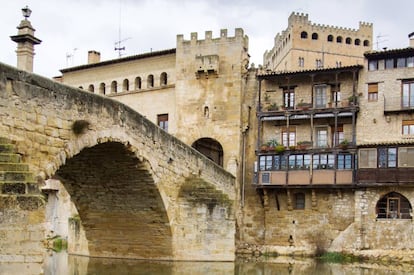
One of the few places in Spain where it is still possible to drive for hours without seeing any other cars is the Comarca del Matarraña, an area comprising several municipalities in the northeastern part of Teruel province. Some people call it “the Tuscany of Spain” although there is no need for comparisons. Matarraña is a land of olive and almond trees, and 18 of its villages are considered among the most beautiful in the entire region of Aragón. There are towns dating back to the Middle Ages and the Renaissance, such as Beceite and Valderrobres, which had its heyday between the 14th and 16th centuries thanks to the sale of oil and saffron. Valderrobres has a walled town with cobblestoned streets, magnificent stone houses and an imposing 12th-century castle commissioned by King Alfonso II of Aragón. Access to the old city requires walking through a crenelated door on the medieval stone bridge over the river that lends its name to the entire comarca.
3. San Andrés de Arroyo (Palencia)
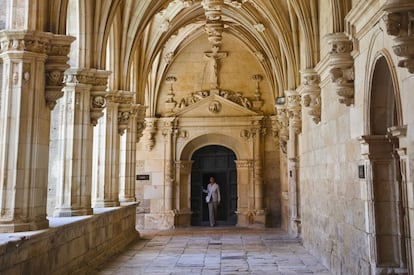
In northern Palencia province, within a 30-kilometer radius around Aguilar de Campoo, there are 50-odd constructions dating back to the period between the 10th and 13th centuries, comprising one of the greatest concentrations of Romanesque art in the whole of Europe. The region’s isolation greatly helped preserve this collection of cloisters and churches, of which there are sublime examples such as the shrine of Santa Cecilia in Vallespinoso de Aguilar; Santa Eufemia de Cozuelos in Olmos de Ojeda, where it is possible to see the influence of Cistercian architecture; or the monastery of San Andrés de Arroyo, a 13th-century construction whose cloister, with its delicately carved chapiters and columns, illustrates the refined heights reached by Romanesque art in Spain. San Andrés de Arroyo is also a good starting point for a route of Palencia’s Romanesque architecture, which includes stops at the churches of San Martín, in Frómista, and San Zoilo in Carrión de los Condes.
4. Valencia de Alcántara (Cáceres)
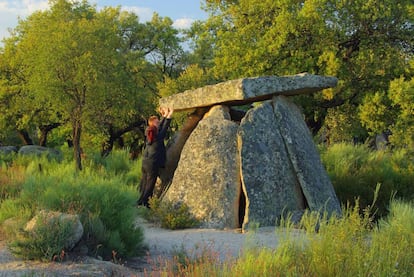
In the fields surrounding Valencia de Alcántara, inside the Tagus International Natural Park, which straddles Spain and Portugal, there lies one of the most important megalithic sites in the Iberian peninsula: more than 40 well-preserved dolmens that can easily be discovered by following low-difficulty trails. Built out of granite or slate, some of them are truly spectacular, such as the dolmen of Las Tapias or the three dolmens of La Zafra. Another stone construction, a Roman bridge made in the second century, still helps today’s travelers cross the Tagus River. In 1497, the church of Nuestra Señora de Rocamador held the wedding of Isabel, daughter of Spain’s Catholic monarchs, and Manuel I, king of Portugal. The event is commemorated on the last weekend of July in Valencia de Alcántara and in the neighboring Portuguese town of Marvão, where there are historical reenactments, street activities and parades. The nearby convent of San Benito is one of the three great monasteries of Extremadura region, together with Guadalupe and Yuste.
5. Prádena de la Sierra (Segovia)
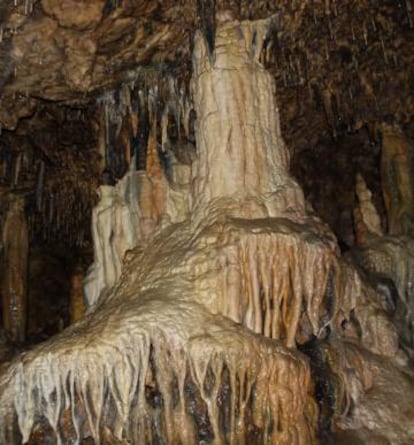
Beautiful calcareous formations and 4,000-year-old graves are concealed under the village of Prádena de la Sierra in Segovia province. Discovered in 1932, the cave of Los Enebralejos has more than 3.5 kilometers of underground galleries that were used as a necropolis since the late Neolithic period. In 1995, around 500 meters were made user-friendly and visitors can now go inside and contemplate wonders such as the Wall of Colors. The most interesting part, however, are the numerous graves containing ceramic vases, bone tools and food offerings, as well as drawings and schematic engravings that were discovered inside the Burial and Sanctuary rooms. Outside the cave, there is a recreation of a prehistoric settlement complete with mud and wooden huts.
Another highlight is a circular six-kilometer walking trail that goes through the largest forest of holly in the Central System mountain range. And in between the nearby municipalities of Sigueruelo and Arcones, there lies one of Spain’s best-preserved forests of sabinas, a type of juniper: the Enebra de Sigueruelo.
English version by Susana Urra.
Tu suscripción se está usando en otro dispositivo
¿Quieres añadir otro usuario a tu suscripción?
Si continúas leyendo en este dispositivo, no se podrá leer en el otro.
FlechaTu suscripción se está usando en otro dispositivo y solo puedes acceder a EL PAÍS desde un dispositivo a la vez.
Si quieres compartir tu cuenta, cambia tu suscripción a la modalidad Premium, así podrás añadir otro usuario. Cada uno accederá con su propia cuenta de email, lo que os permitirá personalizar vuestra experiencia en EL PAÍS.
¿Tienes una suscripción de empresa? Accede aquí para contratar más cuentas.
En el caso de no saber quién está usando tu cuenta, te recomendamos cambiar tu contraseña aquí.
Si decides continuar compartiendo tu cuenta, este mensaje se mostrará en tu dispositivo y en el de la otra persona que está usando tu cuenta de forma indefinida, afectando a tu experiencia de lectura. Puedes consultar aquí los términos y condiciones de la suscripción digital.
More information
Últimas noticias
Most viewed
- Reinhard Genzel, Nobel laureate in physics: ‘One-minute videos will never give you the truth’
- Oona Chaplin: ‘I told James Cameron that I was living in a treehouse and starting a permaculture project with a friend’
- Pablo Escobar’s hippos: A serious environmental problem, 40 years on
- Why we lost the habit of sleeping in two segments and how that changed our sense of time
- Chevy Chase, the beloved comedian who was a monster off camera: ‘Not everyone hated him, just the people who’ve worked with him’


